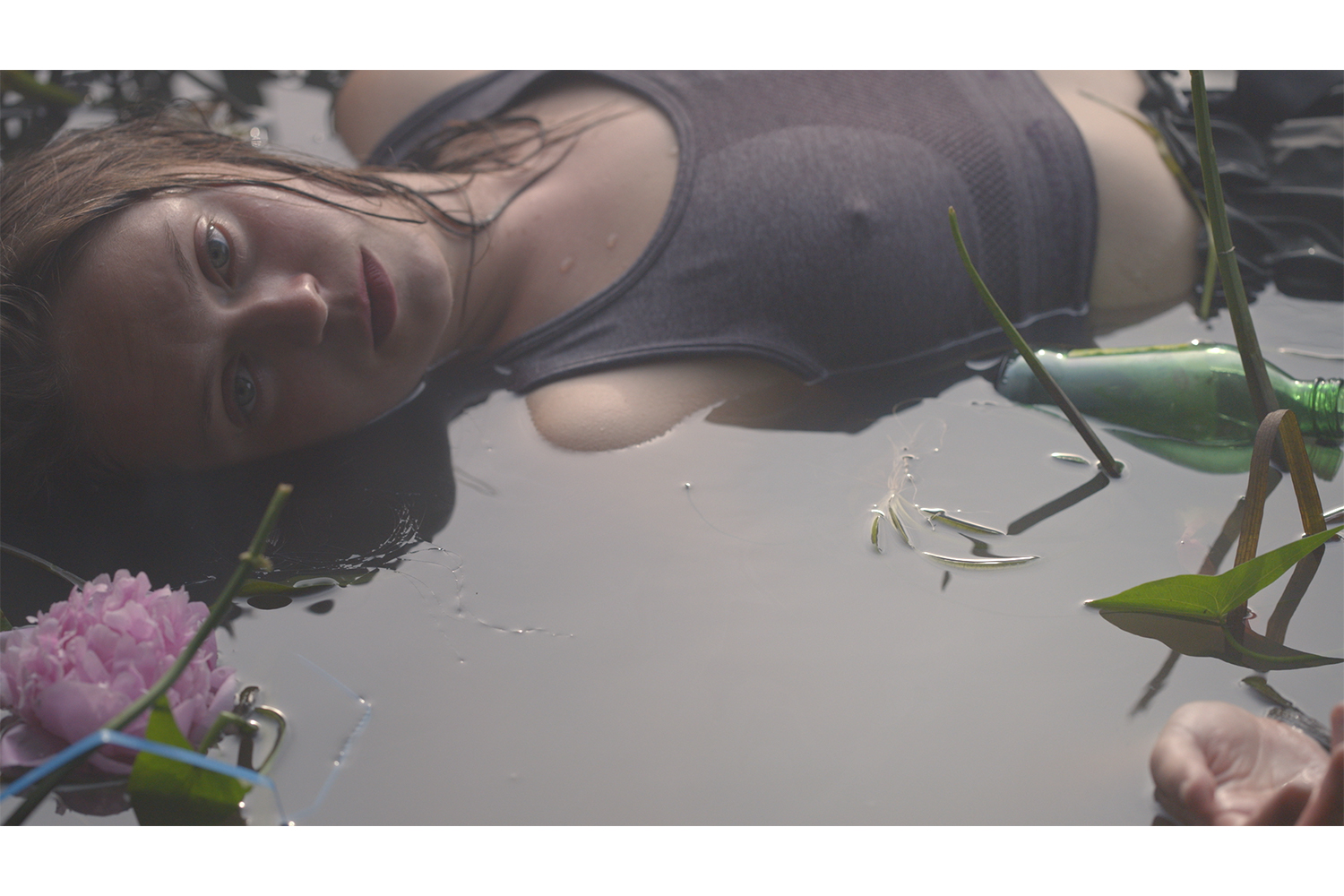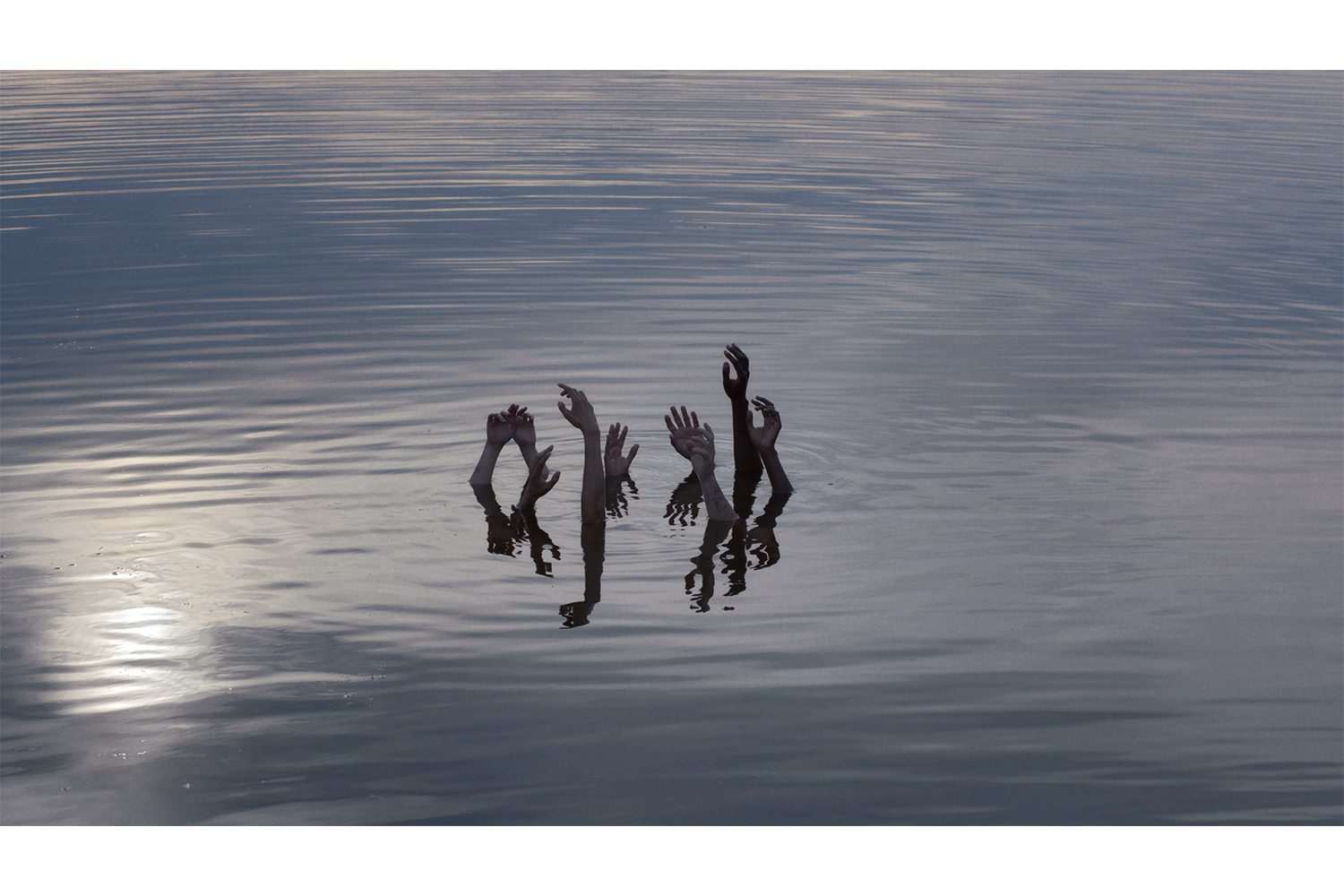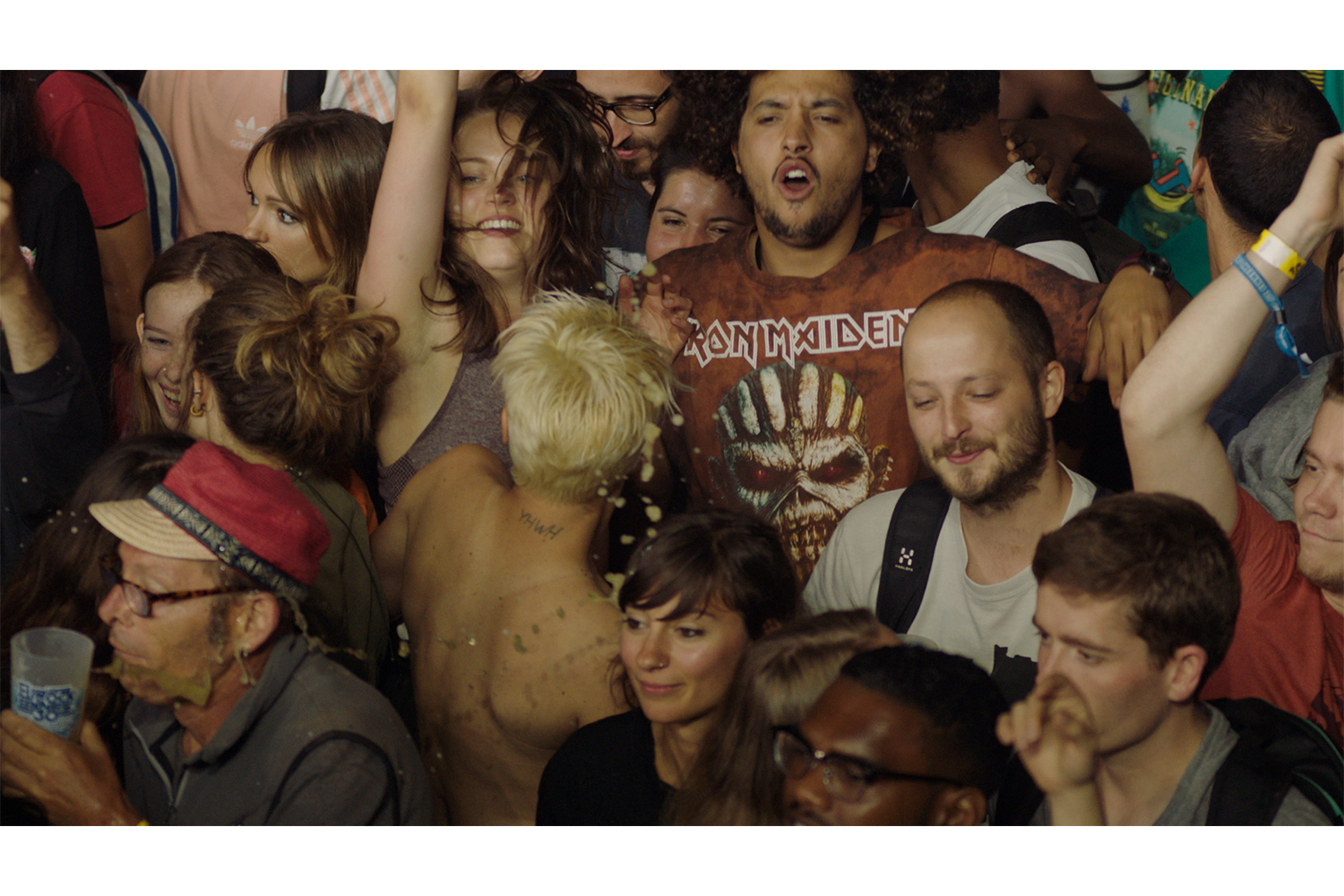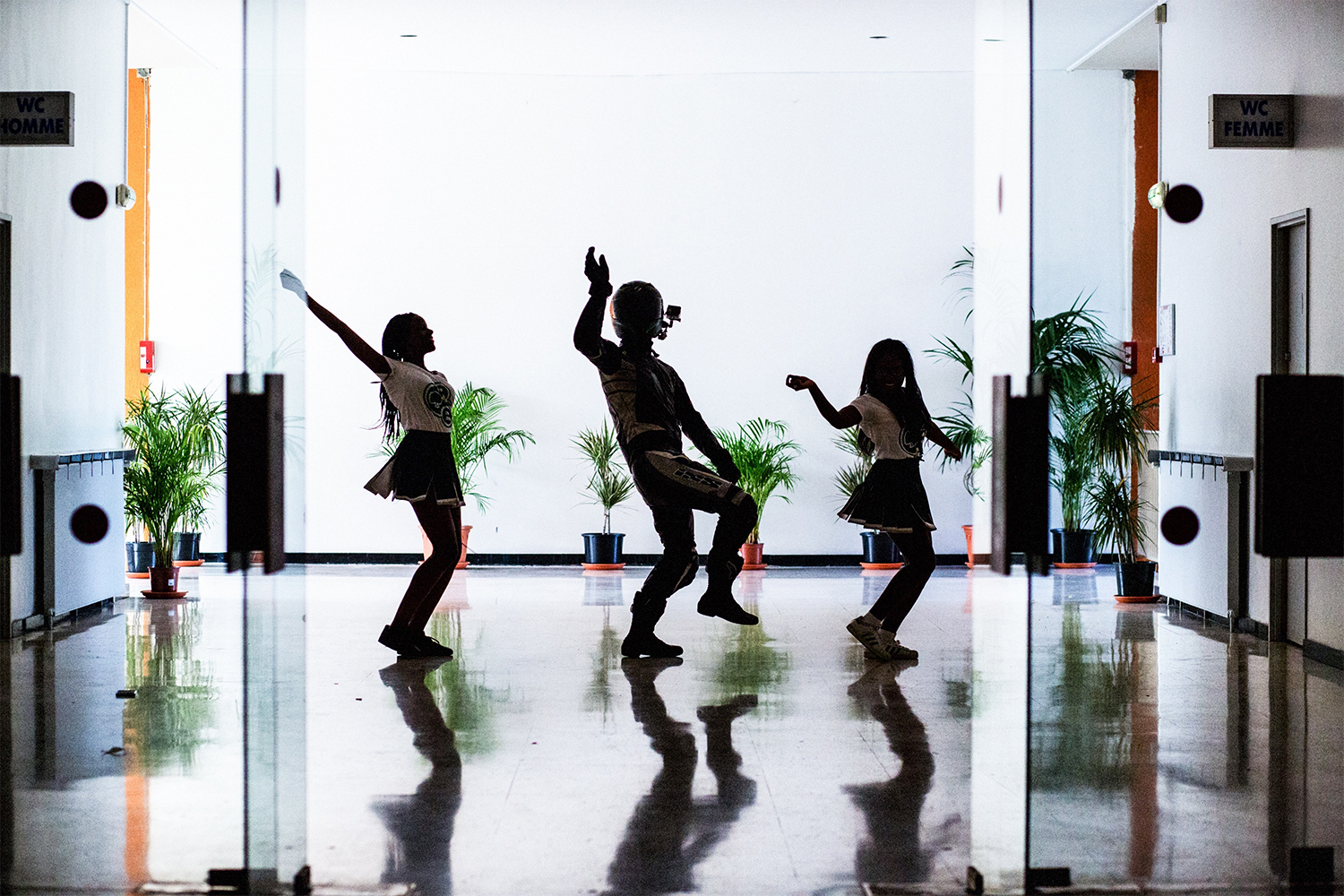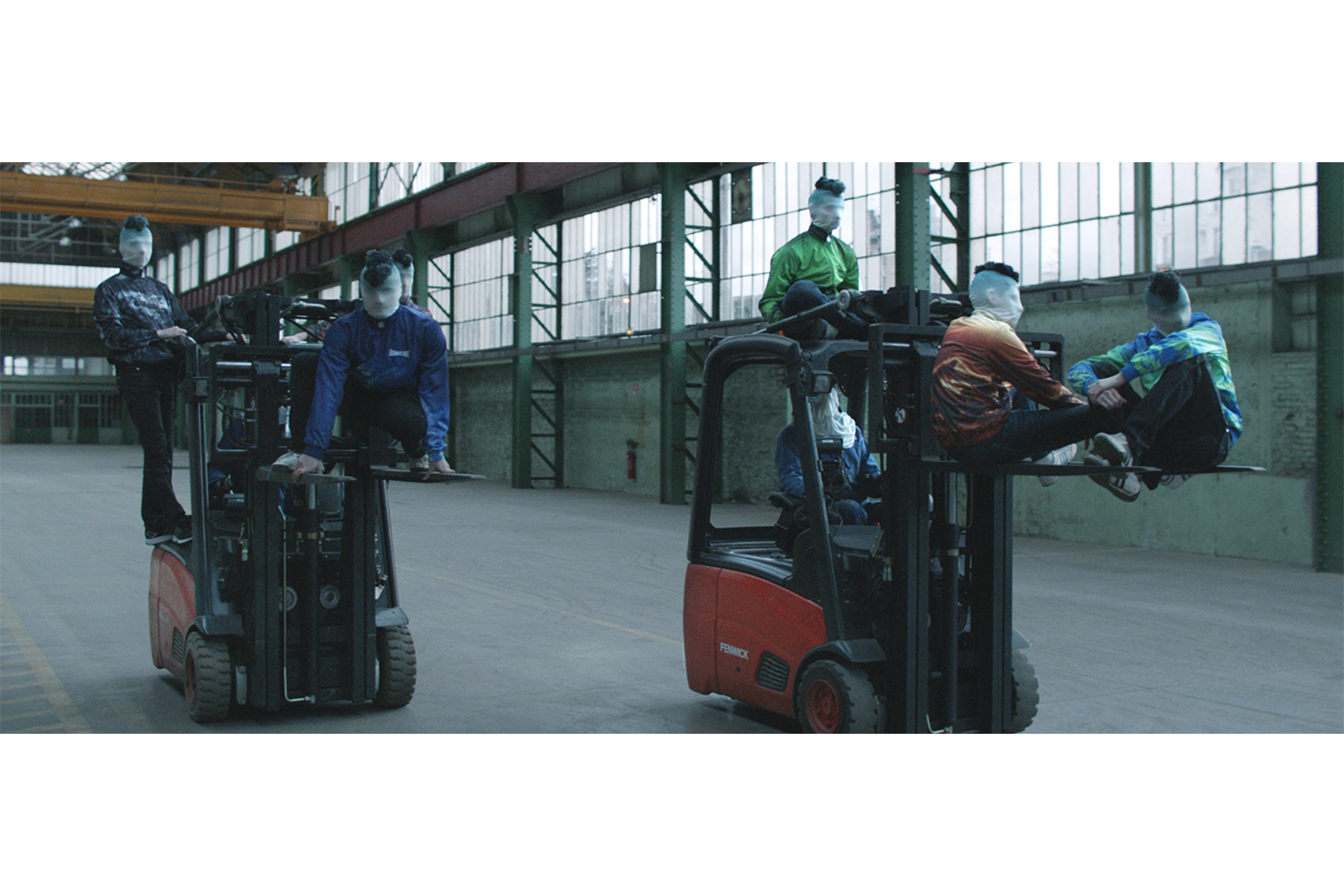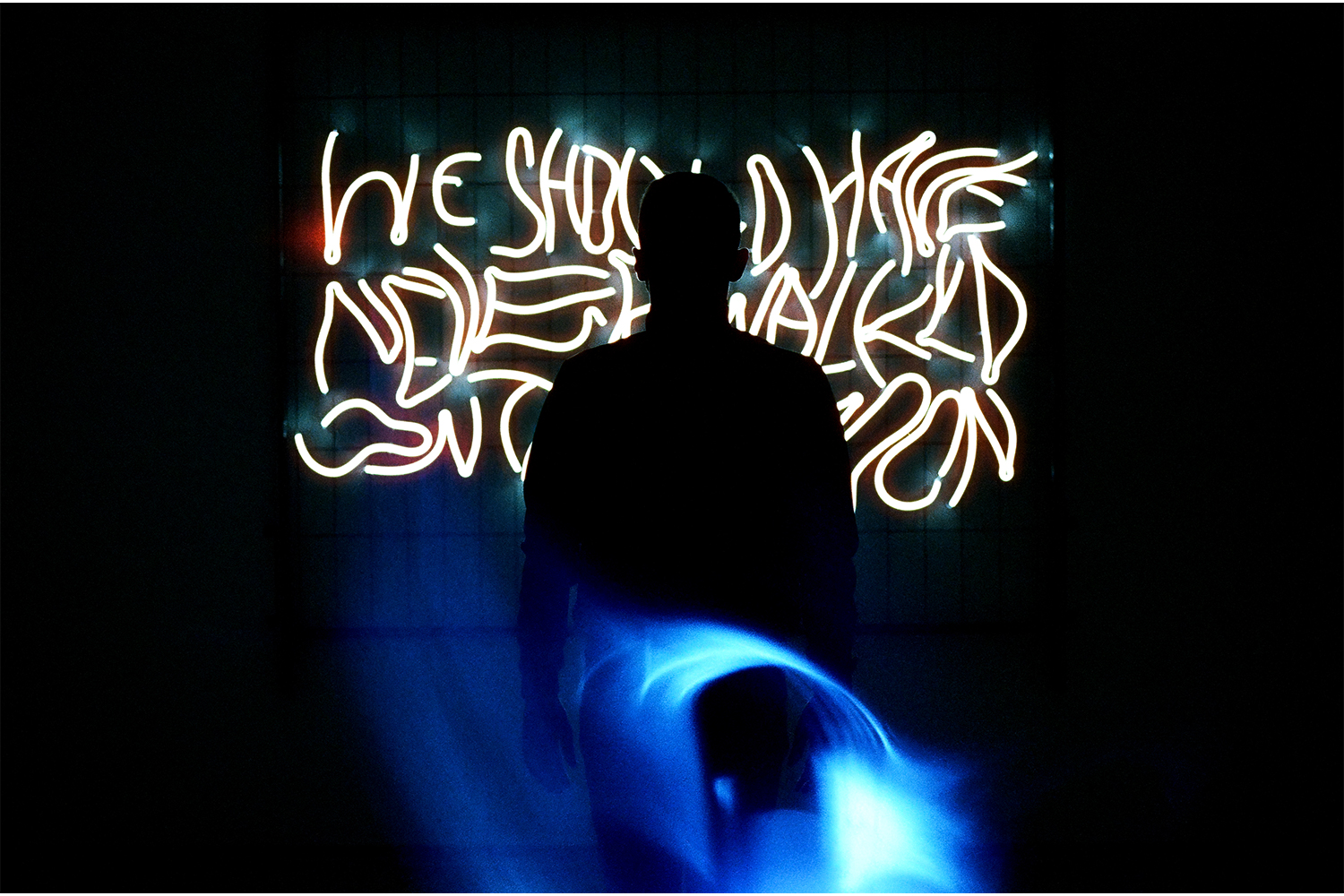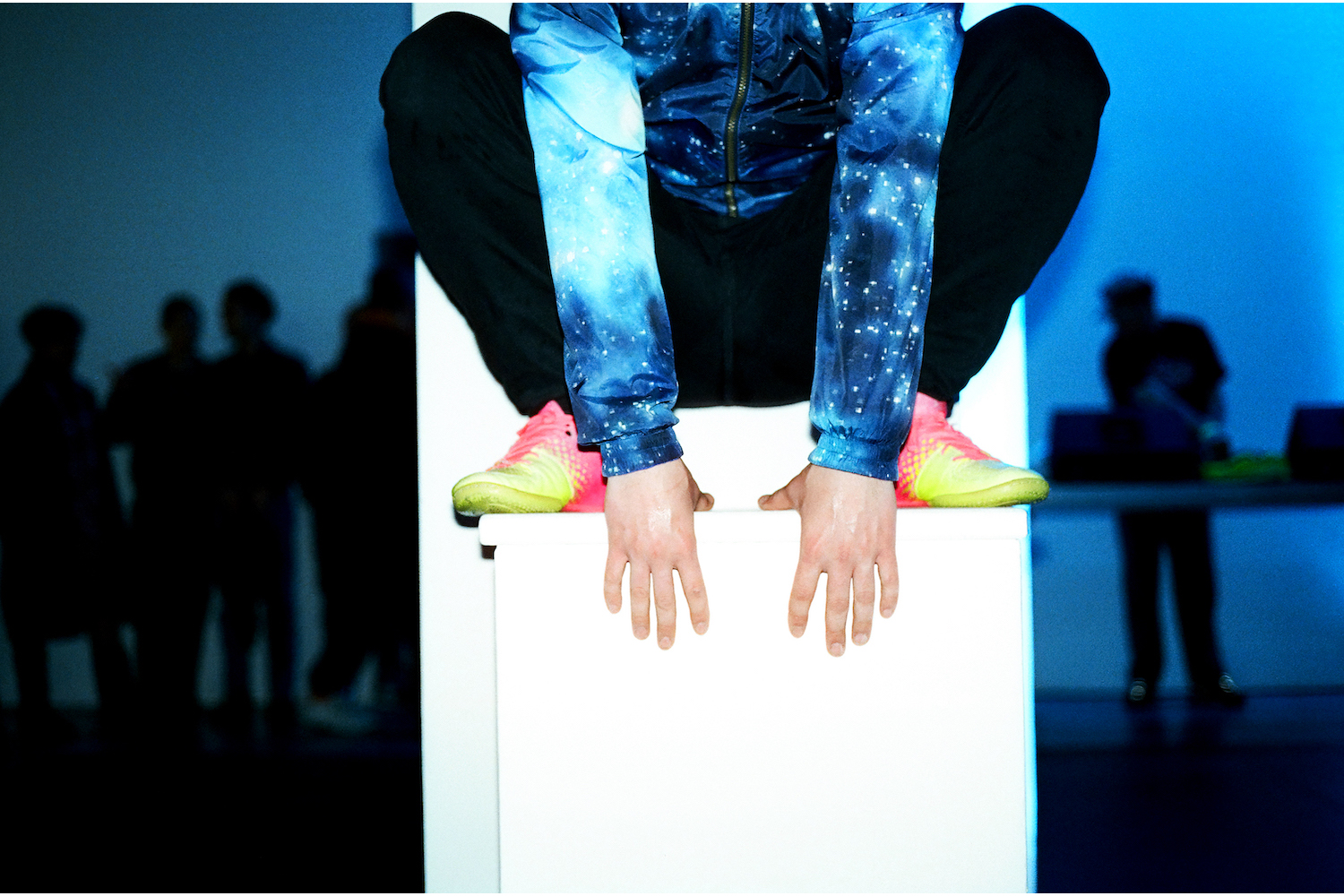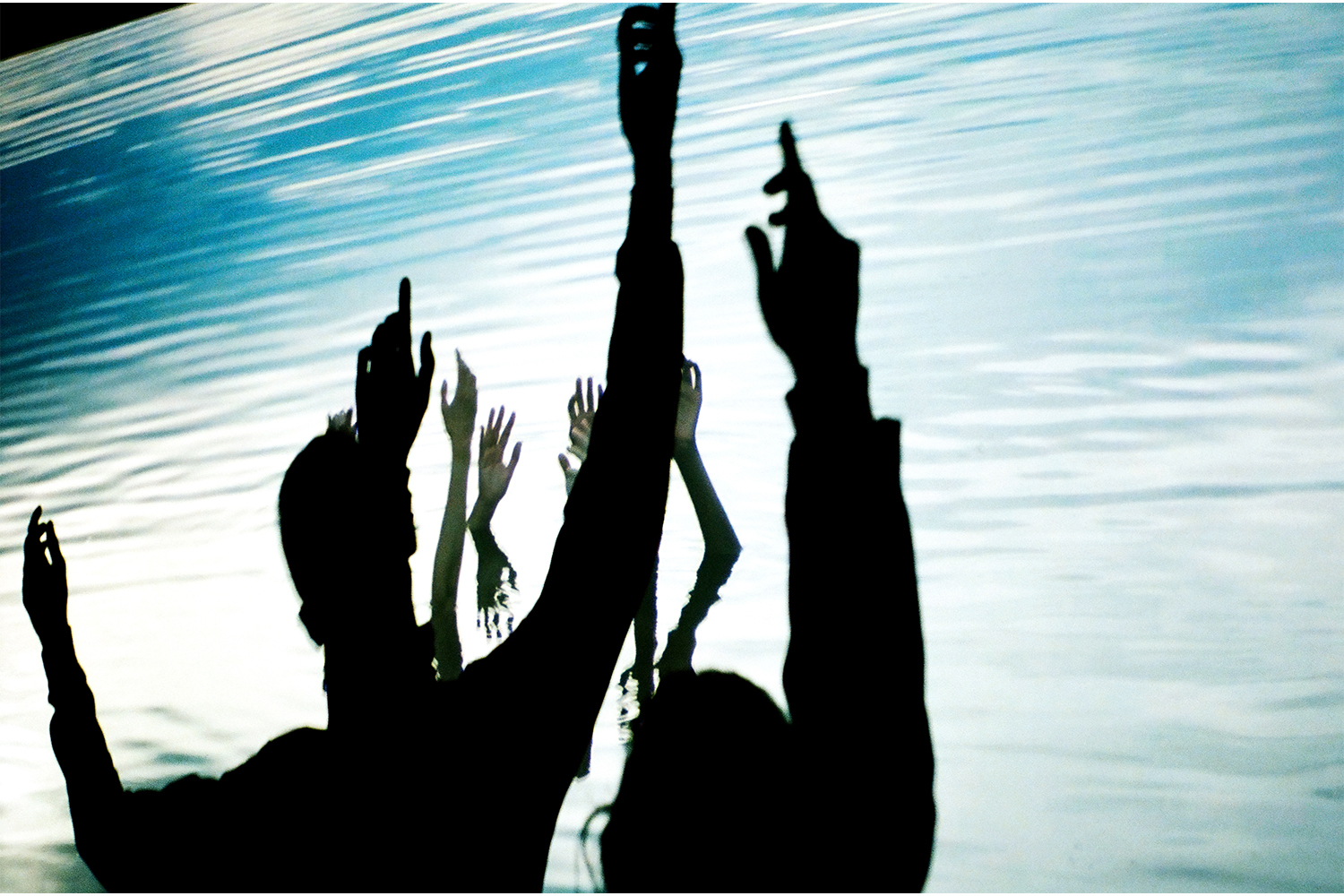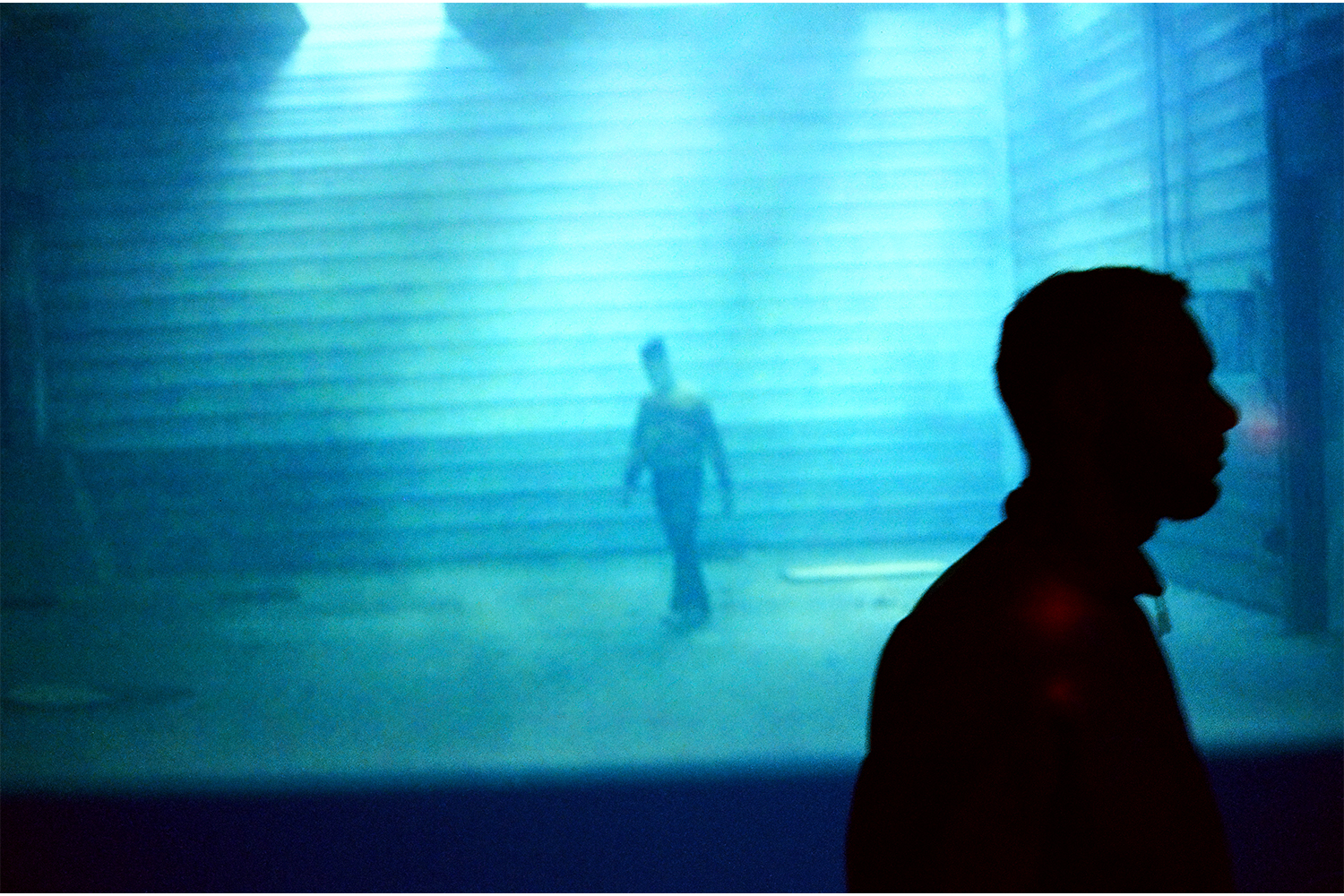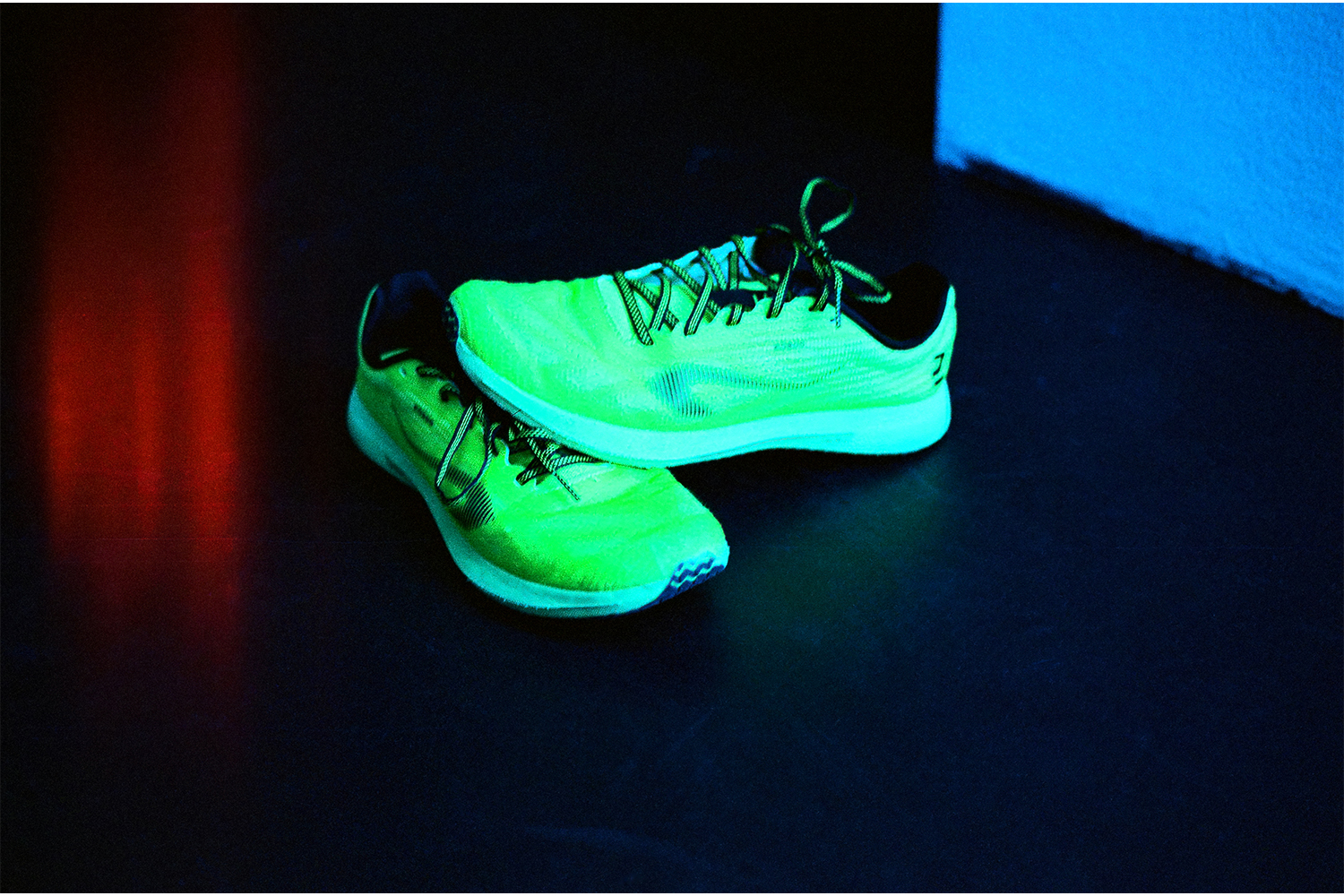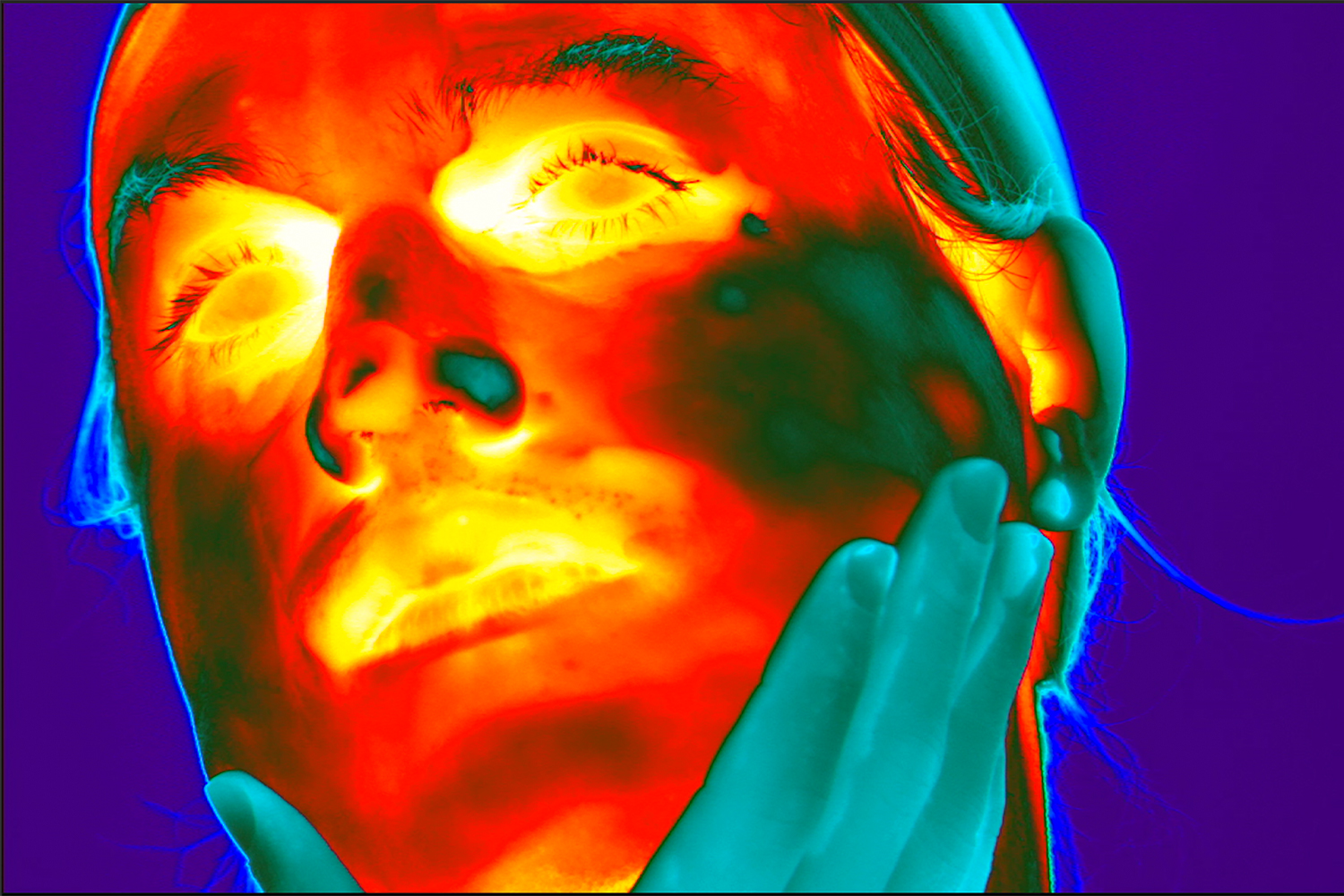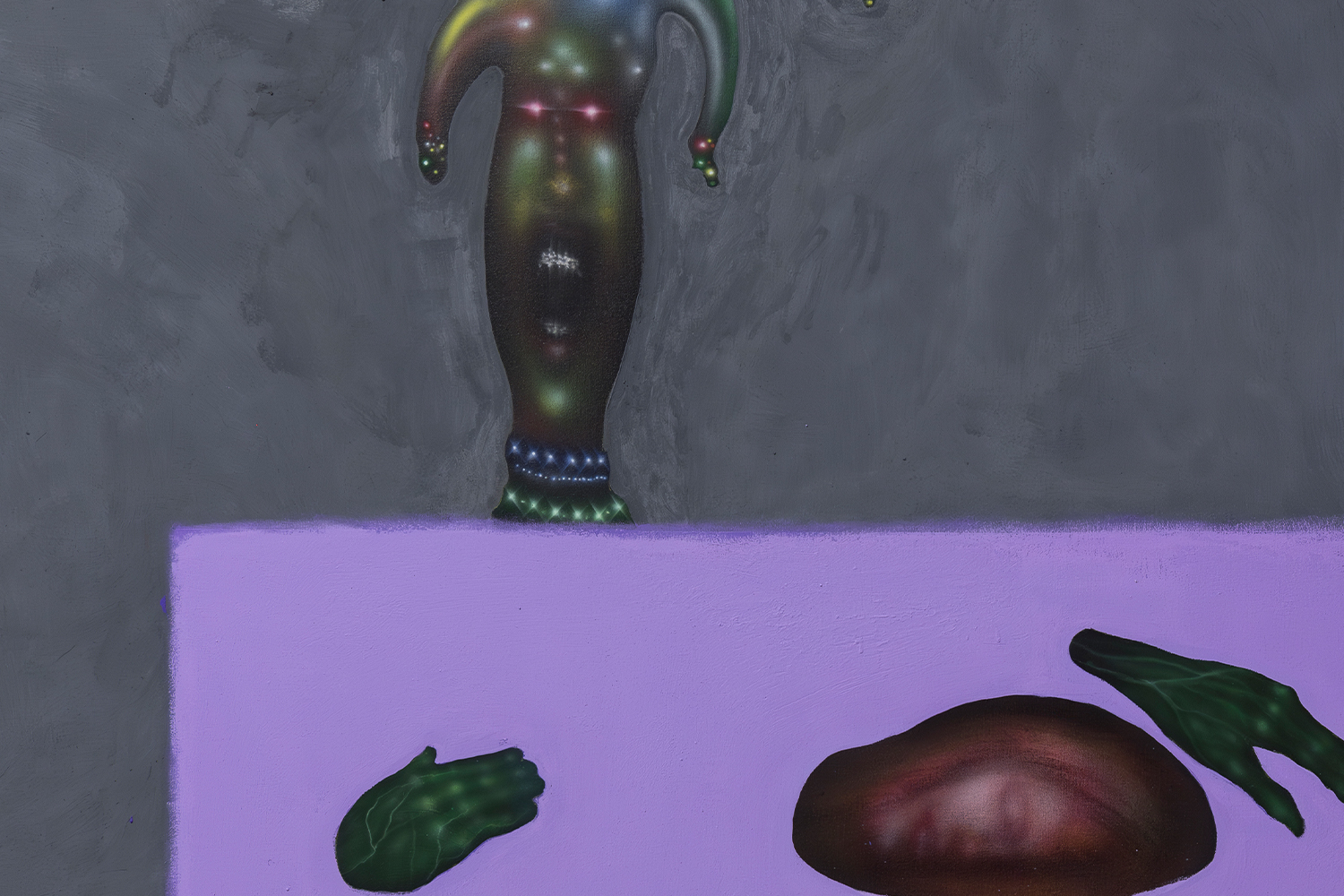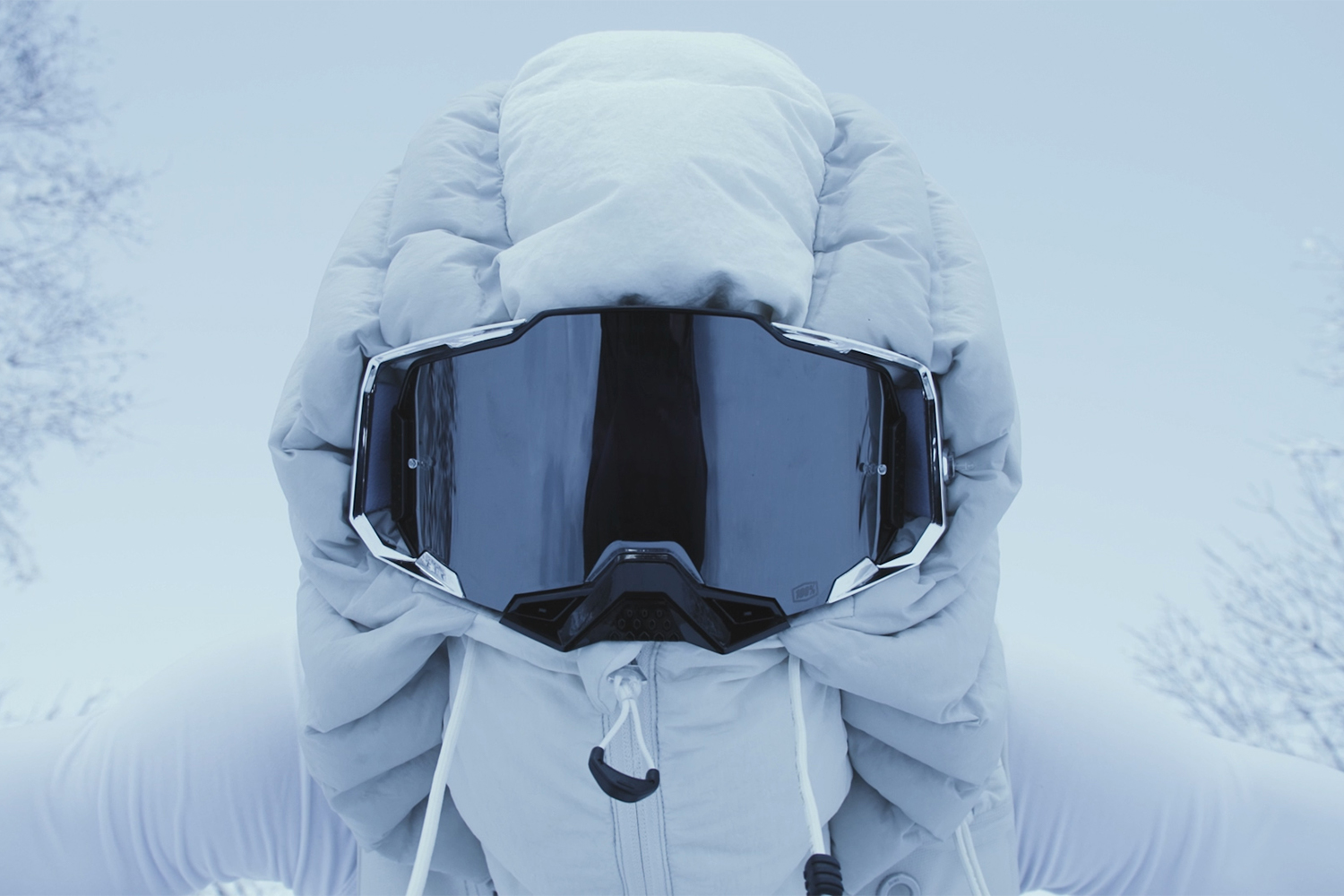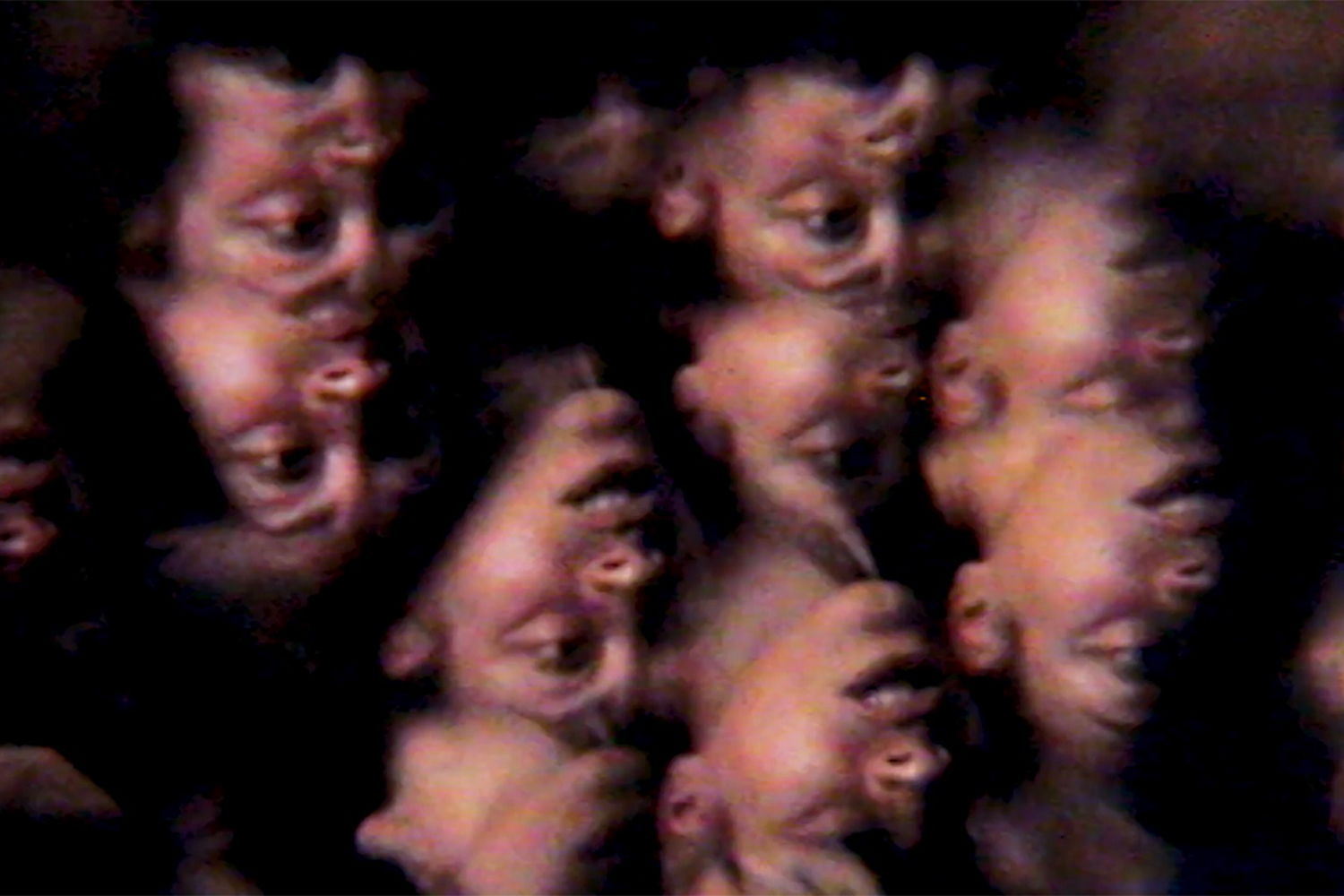“The danger to the community comes from organized people.”
– Yvonne Rainer, Journeys from Berlin, 1971
Pense-bêtes are sticky note reminders posted to ourselves, from ourselves, in over-determined qualities and usually quantities; tiny yellow temporal lobe–dependent tabs of paper that harangue us daily, small coteries of blond, memory-worshipping squares stuck to our Mac screen, fridge, Tupperware, art books, and desultory hippocampus. Melodramatic self-correspondence is so requisite to the amnesiac human species it could hardly be less spectacular:
Our memory is not what it used to be. Organizing themselves in hordes, scrawling their own hurried, signature reminders, are French dance and performance collective (LA)HORDE with their first international solo exhibition in Germany, at the Julia Stoschek Foundation, Berlin. Their pense-bêtes, however, are physical philatelic events for themselves and others, corporeal mnemonic prompts dissecting bone and marrow, and divergent reminders to glue together in epoxied solidarity. Solidarity is a dangerous enough pursuit in politics, but even more so in the contemporary dance arena. Which we’re getting to.
(LA)HORDE is a multidisciplinary, sea-side conjointement founded in 2013 by Marseille-based dance artists pliéing out of classical tradition, Marine Brutti, Jonathan Debrouwer, and Arthur Harel. They examine individual and communal gestures of transgression and resistance by performing protests, inserting their political pense-bêtes in public spaces, and inviting nonprofessionals to enact formations of solidarity. Pursuing an iteration of unification that champions inclusion over synchronization, (LA)HORDE takes to the boundaries of classical dance and bodily representation with three core video installations: Bondy (2017), Cultes (2019), and Novaciéiries (2015). Opening the exhibition is a live jumpstyle performance of Novaciéiries (originally To Da Bone) – a type of dance that gained traction in Northwest Europe and the United Kingdom in the early 2000s. Tantrum-like jumpstyle possesses Stoschek’s grey dance-matted floors in electric spasms, bodies thrashing and dividing in criminal frustration. Hardcore slit-up convulsions and bifurcated limbs break out in the gallery – movements every bit suited to Berlin, a city built on its own apostrophized divides. In the video component of Novaciéiries, legs run violently on imaginary treadmills at high-voltage speeds in an abandoned steel mill. Industrial smoke, spitting fire, and molten lava make way for a singer and stampede of fluro dancers hard jumping to the lost beats of mechanized industry. A bambule is brewing in the alloy mill; empty cups dragged along the galvanized steel of prison cell doors and the marrow of diehard, blue-collar laborers with clenched teeth and fists. A singer takes the song Hardcore to the Bone and marks the lyrics with a branding iron to the body’s memory in protesting lament or melancholic hymn: I’m hardcore to the bone. I’m hardcore to the bone. Singsongy pense-bêtes gyrate through the group forming determined aide-memoires directed at themselves and us.
Compound-time signatures beat our chest cavities with aggressive, proselytizing thumps from DJ bites, hammering home (LA)HORDE’s stony, four-hour-long (ooft!) agitprop. The dancers form circles and link arms in clichéd movements, transforming them into platitudinal movements through breakaways from synchronized activity.
The collective enters an electric earth with evangelical reserves, a treacherous ground questioning whether unified movement represents cohesion. Can the redistribution of dance weight, tetchy fouettés, and nonmatching motion challenge the formation and demonstration of solidarity? Dancing the fine line between cliché and mournful provocation, and sometimes winning, (LA)HORDE’s response to this line of inquiry is to explore somatic divarication.
Cultes continues the filmic examination of the pathos of cooperation with maximum esprit de corps via music festivals and their ritual formations: circles, mud-caked mosh pits, and hellish walls of death. Berlin’s own wall of death investigated the collisions of ideals, partitions, cattle round-ups, and remains of propaganda movements. In Culte, musical near-death (or deathly) experiences are thrown headfirst into the crushing pit of a political misnomer: solidarity can and does come from unification, but it can also come from disunity. We don’t always need to think the same, move the same, live the same, or talk the same in order to band together to pursue an overarching consensus. Hell, mosh pits seek unity through violent discord! And what does remain through (LA)HORDE’s journey to Berlin, hostile port de bras and orderly rubble-raising movements is a little reminder, a yellow, peripheral sticky post-it: civilians don’t need Xeroxed movements, politics, and rituals for a dangerously fair assembly.

